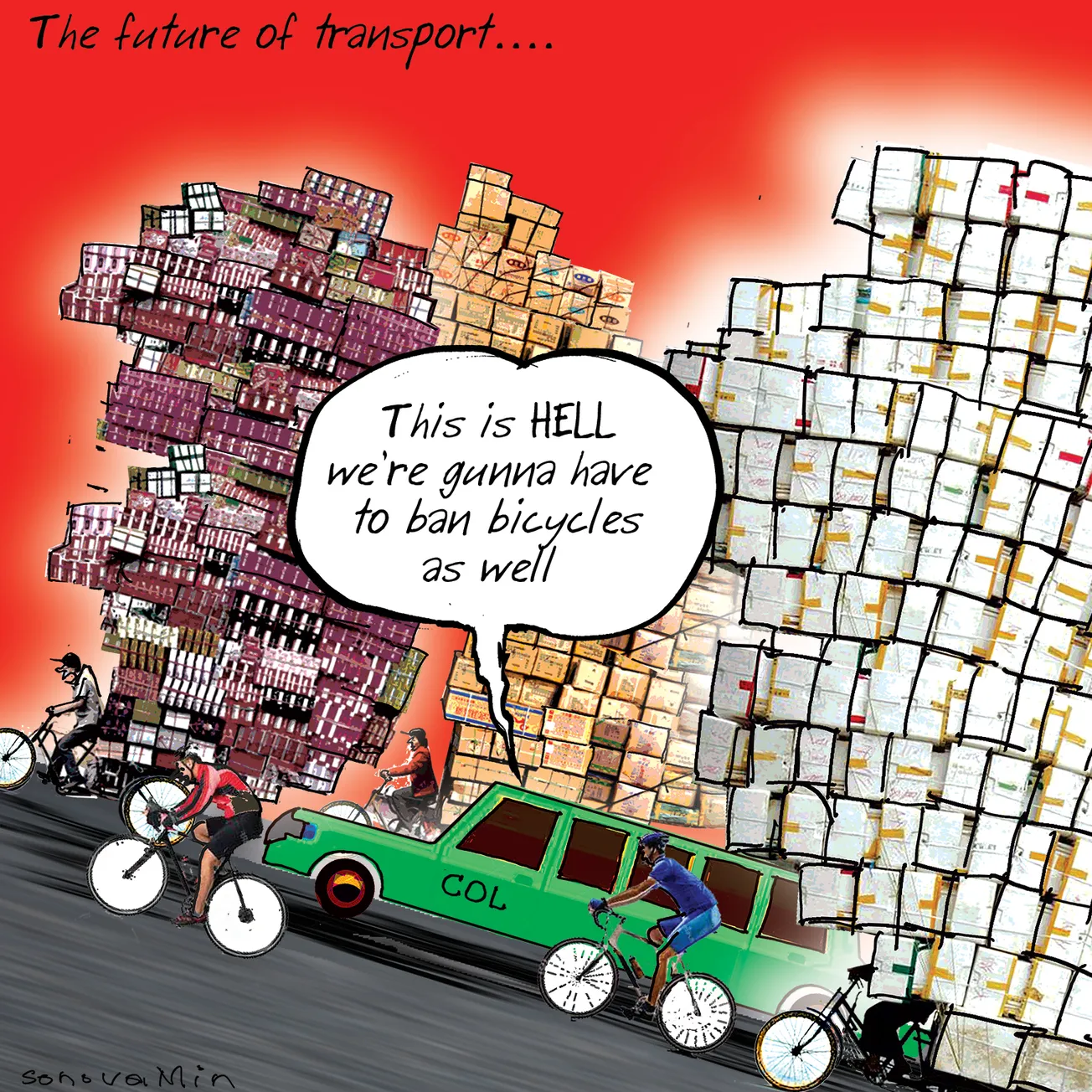Table of Contents
This year Auckland Transport says it will build over 9K of cycleways in Auckland. But that’s not good enough for Simon Wilson who whines about it in a newspaper.
Auckland Transport has “courageously” adopted the Vision Zero road safety plan, targeting 65 per cent reduction in deaths and serious injuries by 2030 and zero by 2050. But why is there no extra money for cycleways?
Unusual scenes in the Auckland Transport boardroom this week. It was quite full, with the board members around one end of the large table, executives around the other, and a large group of staff, from AT, and the council and the police, sitting behind them.
Andrew Bell, “implementation manager for safe systems” at AT, the team leader for most of those staffers, made a speech.
“Tihei mauri ora,” he began, before going on to praise the board for adopting “more than just a document”. He was talking about the Vision Zero Strategy & Action Plan, a major, multi-agency initiative to reduce the number of deaths and serious injuries (DSIs) on our roads.
The targets are very bold: to reduce the current historic highs by 20 per cent by 2021, 65 per cent by 2030 and 100 per cent by 2050. From more than 700 DSIs a year to 250 in 10 years, and to zero in 30 years.
[…]Bell talked a little about the work his team had done. “We’ve talked to people who’ve lost loved ones,” he said. “We have a lot of hope. This plan requires leadership and courage. Thank you.” And they all got up and sang “Tatira mai nga iwi”.
You couldn’t make this up. Can you imagine the board of a major company getting up and all singing Kumbaya My Lord?
[…]Acting chair Wayne Donnelly beamed with pride. He said he’d been involved in safety for a long time. “Finally, we’re moving away from being a car-dominated city,” he said. “Safety is about people in vehicles and outside them.” That’s certainly true: 47 per cent of the sharp rise in DSIs in the past five years has involved people not in a vehicle.
Translation: AT wants Aucklanders to stop driving cars.
[…]They’re excited. Sherritt told me the day before about the $700 million AT has committed to the project over the current 10-year period. Last year, $45m was allocated to safety. This year it’s $75m. Next year it will be $104m.
While high-risk intersections are targeted, so are dangerous rural roads. Speeds will be lowered, although the board has extended to October 31 the deadline for the final proposals on exactly where and by how much.
Already, though, lower speeds are being trialled in Te Atatū and Papakura. There’s been a bit of blowback: some trucks make a lot of noise going over the raised tables at pedestrian crossings, and there are drivers who don’t believe they should have to slow down as much as the tables force them too.
Raised tables at pedestrian crossings also slow down emergency vehicles like ambulances. In other words they prevent lives from being saved.
[…]It’s all good stuff. Or is it? I asked the AT boss, Shane Ellison, what this would mean for bike lanes. He thought about it.
“This doesn’t of itself trigger greater investment,” he said.
What? Why not?
[…]All those extra dollars and no more funding for cycleways? Nothing added to the work plan? Are you kidding?
[…]Ellison said, “We’ve done better than we thought we would this year, too. We thought we’d do 7.65, I think it is, but it’s going to be 9.65. We’re overperforming.”
Those numbers are kilometres. Auckland Transport is “overperforming” in its delivery of cycle lanes by adding less than 10 kilometres a year to the network.
[…]The problem is fear, of angering motorists and their cheerleaders. They really need to get over that.
The fear is losing their jobs for not doing their job, ie improving transport for everyone including people who drive cars.
[…]In the AT strategy to mode-shift people away from single-occupancy vehicles, cycling is supposed to be important. Cycling helps with congestion, public health, community building and, for heaven’s sake, climate change.
But in the budget and plans to support AT’s bold new focus on safety, it’s been forgotten. This is the city that once had the courage to build the pink pathway: Te Ara I Whiti. Where’s that courage now?
So there you have it. AT wants to “mode-shift” people out of cars. And in the name of safety too.









